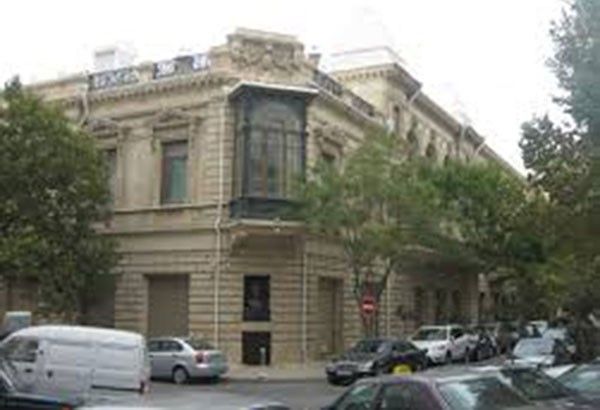Going, going, gone… to South Caucasus!


Whenever I fly out of Philippine skies, friends send me off with a crisp “Bon voyage!” But this time, there were nervous squeaks and muffled rasps. “You’re going where?” cried my children. I replied, “It’s a trip that should knock my socks off.” Tour organizer Arlina Onglao plotted this never-before-visited-places journey for seven ladies roused by curiosity and adventure.
First stop: Baku, Azerbaijan. Just when our plane was taxiing to a halt at the Heydar Aliyev Airport, I gasped, “Wow! This is their airport?” It was a futuristic, massive structure of glass and winding steel that instantly depressed me. How can a seldom-heard-of-falling-below-my-radar-kind-of-place have a super sleek airport? Even the fleet of public taksis were eye-catching in deep purple.
Azerbaijan is nestled in the harbor of the Caspian Sea on the old Silk Road route connecting Asia to Europe along the Caucasus mountain range heading south. Armenia, Georgia, Turkey and Iran are its next-door and proximate neighbors.
The drive from the airport showed no trace of the so-called devastation, political struggles or upheavals. (Hot issues like alleged shadow tax imposition, human rights violations, depletion of oil and gas reserves, territory disputes with neighbors Georgia, Armenia, etc.).
We whisked through a modern motorway, passing rows of designer shops, walled medieval cities, and other structures on paved and cemented roads while our tour guide impressed us further by pointing out uniquely-designed buildings that jutted out of the sky. One even looked like a rolled carpet, and indeed, it was the Carpet Museum.
“What attractions would set Azerbaijan apart from its neighbors?” I asked. Our guide replied, “At least 30 worth your while.”
The Museum of History, the former private residence of oil magnate and philanthropist Haji Taghiyev (pronounced TAH-gi-yev). His life was a rags-to-riches-to-rags saga, discovering oil in his plot of land that made him an instant millionaire, only to be stripped of wealth and position when Russia annexed Azerbaijan in 1920.
In the museum, we were required to wear foot covers. We walked around Taghiyev’s private quarters, opulent in design and ornaments. The museum boasts a collection of native and foreign artifacts acquired or donated through the years. A walk-in safety vault raised my curiosity. The layout was like a typical office with a study desk, wall-to-wall cabinets surrounded by works of art on the wall and rare china. There was a green snake “slithering” by the wired, bolted door. “Is that real?” I shrieked.
Quobustan Petroglyph Reserve, for prehistoric carvings called petroglyphon the surrounding mountains dating some 10,000 B.C. We did a fair bit of walking and climbing as the guide pointed out rock inscriptions, water holes used as drinking source and mirrors and hollow boulders with smooth tops that were used as drums to communicate. I liked the museum’s presentation on the evolution of man and the skills and tools he invented in order to adapt to the environment. For example, from living in dark caves to temperature-controlled houses, from wild horses to “horse-powered” automobiles, raw medicinal plants to lab-formulated pills, etc.
Ateshgah, the Fire Worshippers’ Temple. The temple is built on land where natural gas burned continuously. It has a big courtyard surrounded by little temples used for prayer and worship. Fire was revered by Zoroastrian followers (main religion of Azerbaijan) and believed to have given Azerbaijan its name, meaning “Land of Fires.” With the wind blowing fiercely, I kept myself warm by standing close to the open fire while watching the flames take on different shapes, some forbidding, some whimsical.
Yanar Dagh, meaning “Burning Mountain,” is on a hillside near Baku where flames jetted into the air from porous sandstone. Natural gas seeping through the sandstone kept the flames perpetually ablaze.
Hayder Aliyev Museum is ultramodern, an interactive museum that looks like a big, undulating tsunami wave. It was designed by the groundbreaking lady architect Dame Zaha Hadid, an Iraqi-born British (she recently passed away). Hadid used the wave as a symbol of Azerbaijan’s past, flowing continuously to the present and into the future. You won’t find any straight lines in this museum in keeping with the theme. Only winding, rolling and wavelike threads and bars.
One wing is devoted to the third president of Azerbaijan, Hayder Aliyev, extolling his life, career, and achievements. Each milestone was juxtaposed in an artsy way making the numbers eye-catching. Aliyev served as head of KGB in Azerbaijan (higher in rank to Vladimir Putin) before assuming the top position. His son, Ilham, is Azerbaijan’s current president.
The other wing is called “Weaving the Threads of History,” which highlights local arts and culture, history, music, kuba-woven local fabric and ethnic costumes.
I was intrigued by their collection of old musical instruments. You step on a red carpet and the instrument on exhibit will play, thus making you appreciate both the instrument and the sound it makes.
We caught a photo exhibition on Princess Grace of Monaco; Spanish sculptor Jaume Plensa and his human study in painted stainless steel and silhouetted by alphabet letters; and the colorful, “Seuss-ian” art sculptures of Japanese avant garde artist, Yayoi Kusama (with her signature red hair and bangs). There was also a display of painted fawns in bursting colors. All eye-pleasurable.
For tourists in a hurry, the museum made scale models of uniquely designed buildings found in Baku. How convenient to get a bird’s eye view of Azerbaijan’s landmarks.
The following day, we drove outside Baku to Sheki, long famed as a silk center and an important rest stop on the Great Silk Route. We were taken to local inns called caravanserais with large courtyards that could accommodate caravans. Can you imagine the clatter of hoofs and grunts as weary merchants stopped for a night’s rest in Sheki?
Another must-see is the Sheki Palace (summer palace of the ruling Khans), boasting magnificent frescoes and Venetian stained colored glass windows called shebeke (wooden frames without nails). Caution on the stairs, though: It was so steep that I used both arms and legs to climb it. When the guide saw me grappling, she chuckled and explained, “The steps are high because visitors who were invited to Sheki Palace were like giants, six to seven footers!”
Thirty sites? There were more. Beyond the walled medieval cities there are caravanserai, tea caverns, carpet peddlers, galleries, buildings and museums, mud volcanoes, petroglyphs, archaeological diggings, eternally-burning fire temples and sandstones and purple cabs. Hashtag these showstoppers of smiles and surprises in Azerbaijan. They provided a peek into the gastronomical delights that awaited visitors and first-timers like us.
Azerbaijan cuisine boasts brickstone-baked breads and traditional recipes richly infused with nuts, fruits, vegetables, seafood and meat kebabs to satisfy any appetite. It was yummy-licious.



















